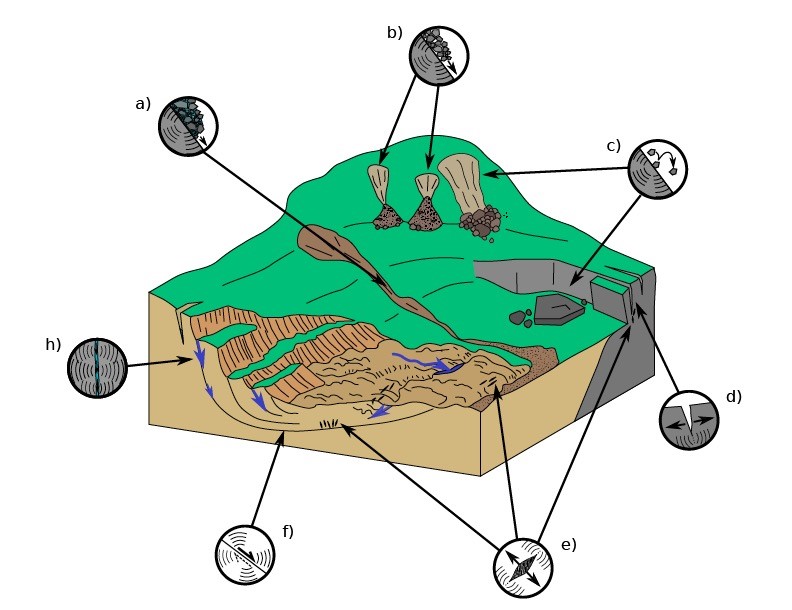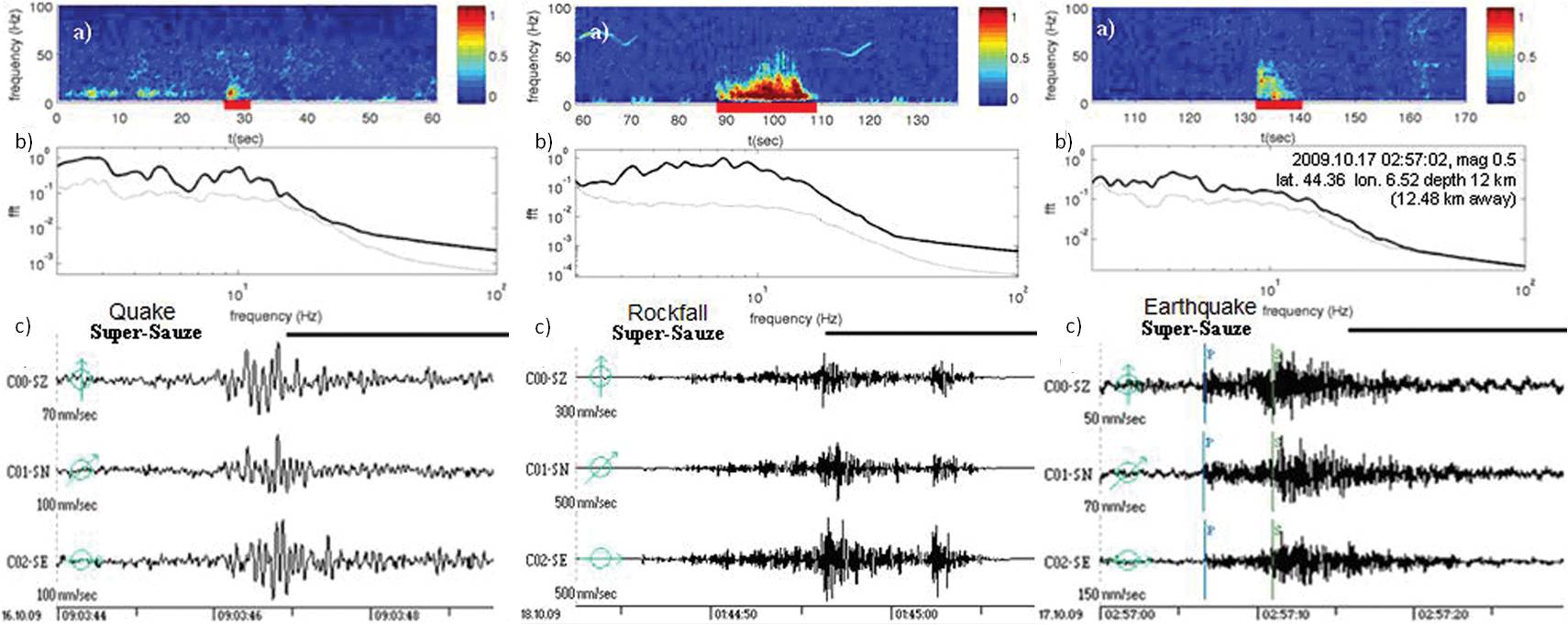Unstable slopes are highly seismogenic geological objects. Landslide endogeneous seismic sources (each with a distinct seismic signatures) can be generated by several mechanical processes such as fractures (crack opening, shearing), topples and falls (free-fall, boucing, and rolling of blocks), mass flows (contacts of sediments in a slurry) and fluid-related flows (fluid migration at the surface or in-depth).
 |
| Conceptual illustration of the endogenous seismic sources observd on unstable slopes with a) wet granular flow, b) dry granular flow, c) rockfall, d) tensile fracture opening, e) tensile cracks opening, f) shearing and h) fluid migration in fracture (Provost et al., 2018). |
Analysing the sources of these signals can help building instrumental catalogues at very high temporal and spatial resolution. These catalogues help to better understand the dynamics of the unstable slopes, their link with external forcings, and ultimately the existence of precursors before massive failures.
The seismic signals are categorized from the analysis of attributes derived from the spectral content, the duration or the polarity of the waveforms.
 |
 |
|
Types of seismic signals observed at Séchilienne - Left: Seismograms recorded by station THE; Middle: Zoom for a window of 5 s around the peak of amplitude; Right: Spectrograms. and micro-earthquakes (in black).
|
Types of seismic signals observed at Super-Sauze - Left: Example of a seismic signal of a micro-earthquake (slidequake). Middle: Example of a seismic signal of a rockfall. Right: Example of a seismic signal of a regional earthquake. From top to bottom: a) Spectrograms averaged over all vertical sensors; b) Fast Fourier Transform of the seismic signals (black line) and of the noise (grey line); c) Zooms of the seismograms of the 3 component sensor (C00 vertical component; C01: N–S component ; C02: E-W component). The time length of the seismograms corresponds to the red line on the spectrograms. (Tonnellier et al., 2013).
|




